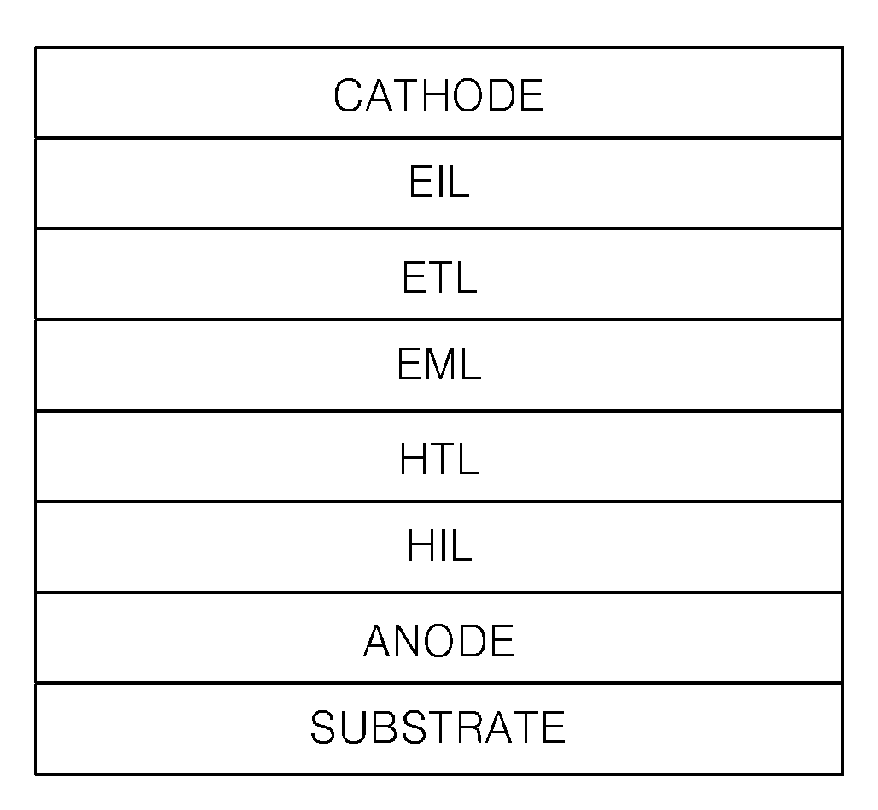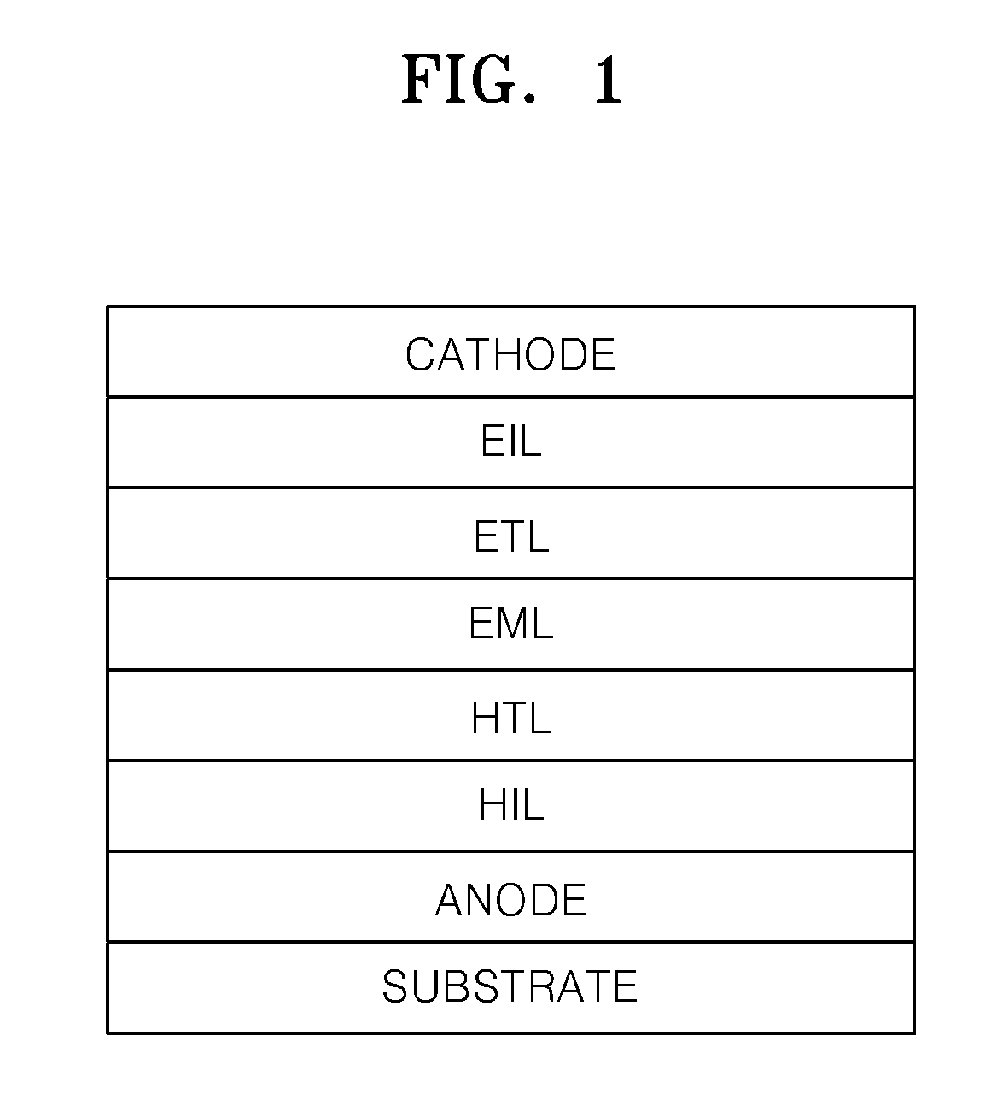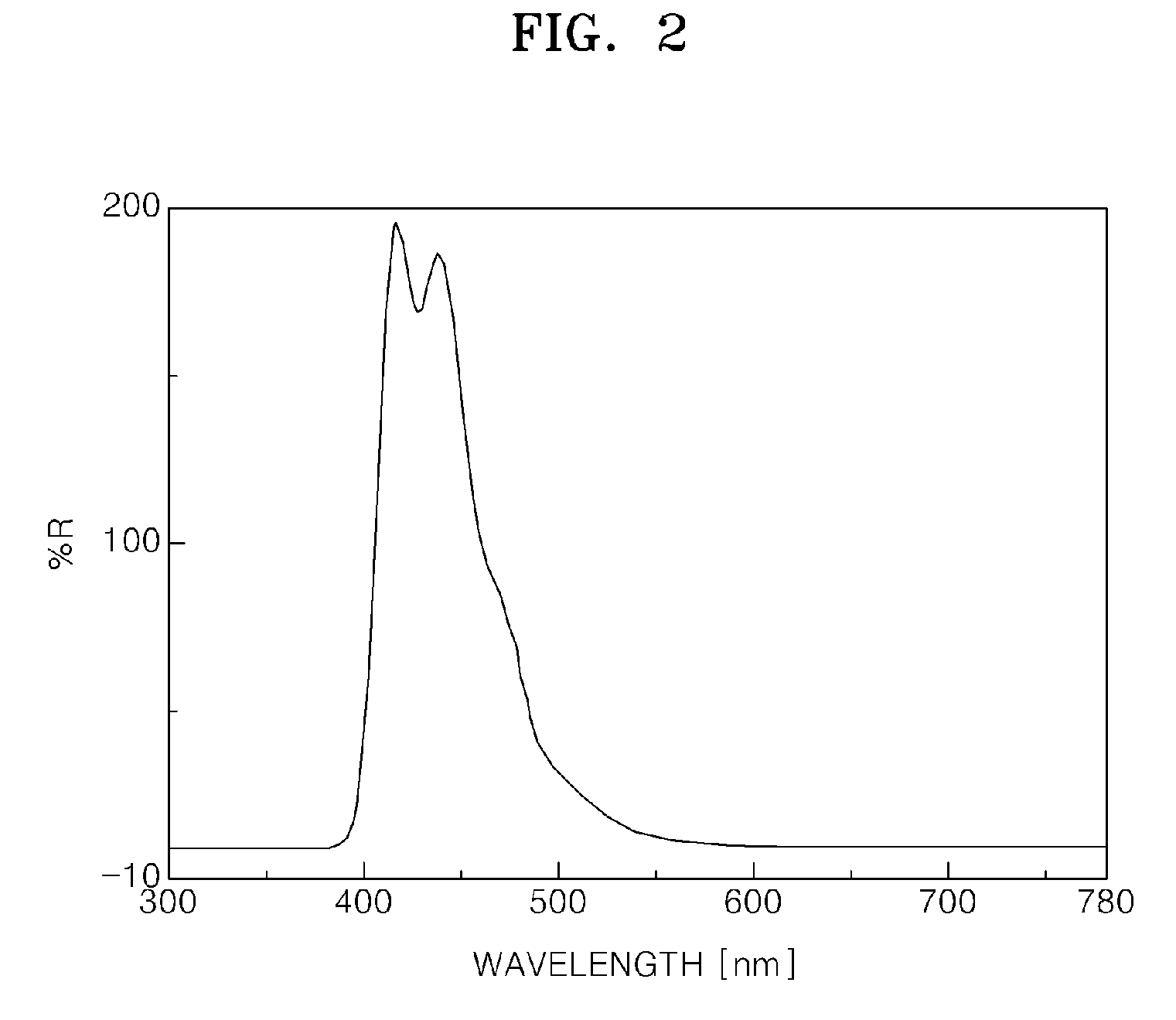Heterocyclic compound and an organic light emitting device comprising the same
a light emitting device and heterocyclic compound technology, applied in the direction of discharge tube/lamp details, discharge tube luminescnet screen, organic chemistry, etc., can solve the problem of almost impossible to realize a large-scale organic light emitting device that can produce an acceptable color gamut, and achieve high electrical stability and color purity. high
- Summary
- Abstract
- Description
- Claims
- Application Information
AI Technical Summary
Benefits of technology
Problems solved by technology
Method used
Image
Examples
synthesis example 1
Preparation of Compound 2
[0059]Compound 2 was synthesized through Reaction Scheme 2 below.
[0060](1) Synthesis of Intermediate A
[0061]1.36 g (10.0 mmol) of 2,5-dimethyl-1,4-phenylenediamine and 4.10 g (24.0 mmol) of 4-bromotoluene were dissolved in 50 Ml of toluene. 2.88 g (30.0 mmol) of sodium t-butoxide, 0.388 g (0.40 mmol) of Pd(dba)2 and 0.08 g (0.40 mmol) of tri-t-butylphosphine((t-Bu)3P) were added to the solution, and the mixture was stirred at 80° C., for 5 hours. The resultant mixture was cooled to room temperature, and then 50 Ml of water was added thereto. The resultant mixture was subjected to extraction three times, using 20 Ml of ethyl ether. A collected organic layer was dried using magnesium sulfate, and the residue (prepared by removing the solvent) was separated and purified using a silica gel column chromatography, to obtain 2.15 g of Intermediate A (Yield: 68%).
[0062]1H NMR (CDCl3, 400 MHz) δ (ppm) 7.24-7.33 (m, 4H), 7.09 (s, 2H), 6.85-6.78 (m, 4H), 5.25 (bs, 2H),...
synthesis example 2
Preparation of Compound 12
[0069]Compound 12 was synthesized through Reaction Scheme 3 below.
[0070](1) Synthesis of Intermediate C
[0071]1.36 g (10.0 mmol) of 2,5-dimethyl-1,4-phenylenediamine and 5.13 g (22.0 mmol) of 4-bromobiphenyl was dissolved in 50 Ml of toluene. 2.88 g (30.0 mmol) of sodium t-butoxide, 0.388 g (0.40 mmol) of Pd(dba)2, and 0.08 g (0.40 mmol) of tri-t-butylphosphine((t-Bu)3P) were added to the solution, and the mixture was stirred at 80° C., for 5 hours. The resultant mixture was cooled to room temperature, and then 50 Ml of water was added thereto, and the resultant was subjected to extraction three times, using 20 Ml of ethyl ether. A collected organic layer was dried using magnesium sulfate, and the residue prepared by removing the solvent was separated and purified, using a silica gel column chromatography, to obtain 3.13 g of Intermediate C (Yield: 71%).
[0072]1H NMR (CDCl3, 400 MHz) ∂ (ppm) 7.24-7.04 (m, 14H), 6.75-6.58 (m, 4H), 5.12 (bs, 2H), 2.17 (s, 6H); ...
synthesis example 3
Synthesis of Compound 71
[0079]Compound 71 was synthesized through Reaction Scheme 4 below.
[0080](1) Synthesis of Intermediate E
[0081]1.36 g (10.0 mmol) of 2,5-dimethyl-1,4-phenylenediamine and 3.77 g (24.0 mmol) of 4-bromobenzene were dissolved in 50 Ml of toluene. 2.88 g (30.0 mmol) of sodium t-butoxide, 0.388 g (0.40 mmol) of Pd(dba)2, and 0.08 g (0.40 mmol) of tri-t-butylphosphine((t-Bu)3P) were added to the solution, and the mixture was stirred at 80° C., for 5 hours. The resultant mixture was cooled to room temperature, and then 50 Ml of water was added thereto, and the resultant was subjected to extraction three times, using 20 Ml of ethyl ether. A collected organic layer was dried using magnesium sulfate, and the residue prepared by removing the solvent was separated and purified, using a silica gel column chromatography, to obtain 1.78 g of Intermediate E (Yield: 62%).
[0082]1H NMR (CDCl3, 400 MHz) δ (ppm) 7.28-6.89 (m, 12H), 5.43 (s, 2H), 2.15 (s, 3H); 13C NMR (CDCl3, 100 MH...
PUM
| Property | Measurement | Unit |
|---|---|---|
| temperature | aaaaa | aaaaa |
| size | aaaaa | aaaaa |
| brightness | aaaaa | aaaaa |
Abstract
Description
Claims
Application Information
 Login to View More
Login to View More - R&D
- Intellectual Property
- Life Sciences
- Materials
- Tech Scout
- Unparalleled Data Quality
- Higher Quality Content
- 60% Fewer Hallucinations
Browse by: Latest US Patents, China's latest patents, Technical Efficacy Thesaurus, Application Domain, Technology Topic, Popular Technical Reports.
© 2025 PatSnap. All rights reserved.Legal|Privacy policy|Modern Slavery Act Transparency Statement|Sitemap|About US| Contact US: help@patsnap.com



